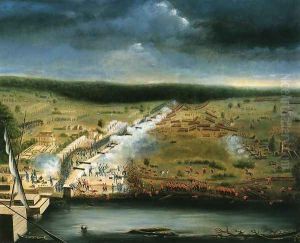Jean-Hyacinthe Laclotte Paintings
Jean-Hyacinthe Laclotte was a French artist and architect born in 1766, primarily known for his work during the late 18th and early 19th centuries. His early life and training remain somewhat obscure, but it is known that he was active during a tumultuous period in French history that included the French Revolution and the Napoleonic Wars.
Laclotte's artistic career is most notably connected to his architectural drawings and watercolors. He is recognized for his detailed and accurate representations of buildings and urban landscapes, which have provided historians with valuable insights into the architecture of his era. His works often exhibit a keen eye for perspective and a strong command of light and shadow, reflecting the technical skills that were highly valued at the time.
Although Laclotte's fame may not rival that of the leading artists of his day, he contributed to the visual documentation of his era's architectural heritage. His drawings and paintings have served as historical records for buildings that have since been altered or destroyed, making his work an important resource for understanding French architecture and urban design of the late 18th and early 19th centuries.
Laclotte's life and career were undoubtedly affected by the political upheavals of his time. The French Revolution brought about significant social and cultural changes, which influenced the art world and the opportunities available to artists. Despite these challenges, Laclotte continued to work and adapt to the changing times.
Jean-Hyacinthe Laclotte passed away in 1829, leaving behind a legacy as a skilled draftsman and painter whose work captured the essence of his historical context. While he may not be as widely known as some of his contemporaries, his contributions to the field of architectural representation remain valued by art historians and scholars of French history.
